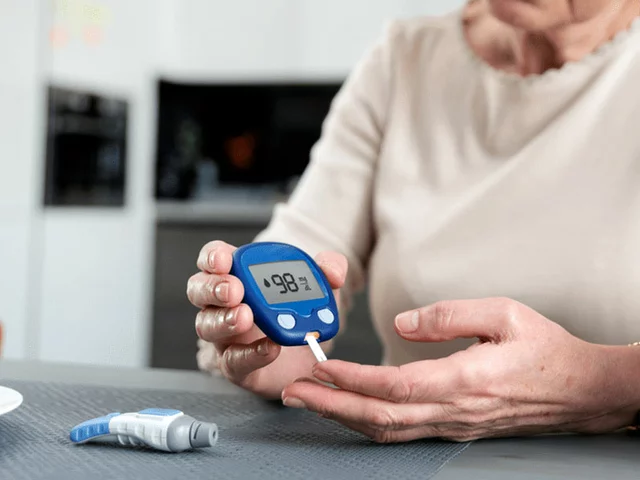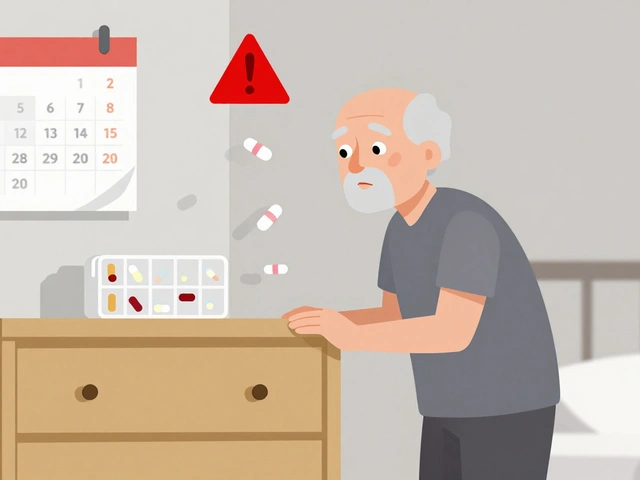
Picture this: a single tablet that’s quietly changing the way we talk about male fertility. A few years ago, if you’d told me I’d be writing about a prescription drug that was making as much noise in men’s health circles as in fertility clinics, I’d have chuckled. Fast forward to now, and Enclomisign is the word on everyone’s lips, from online forums to doctor’s waiting rooms. Whether you’re tracking your own fertility journey or just curious about the science behind this drug, buckle up—what you’ll discover goes far beyond the usual brochure talk.
What Is Enclomisign and Why Is Everyone Talking About It?
Enclomisign isn’t some mysterious new compound fresh out of a sci-fi movie; it’s the brand name for enclomiphene citrate, a single isomer extracted from clomiphene. If you’ve ever heard of clomiphene (sold as Clomid), you’ll know it’s a classic in the world of female fertility. But here’s where things get interesting: Enclomisign is fine-tuned for men. It’s designed to help boost natural testosterone levels and kickstart sperm production without the side effects that come with traditional testosterone replacement therapy (TRT). That means less risk of shrinking testicles, less worry over disturbed sperm count, and quite possibly, a lot more confidence about future paternity.
Doctors have been using clomiphene for decades, but the mixed isomers often lead to unwanted estrogenic side effects. Enclomisign is different; it hones in on the parts that stimulate follicle-stimulating hormone (FSH) and luteinizing hormone (LH)—the big bosses behind sperm and testosterone production. There’s data to back this up, too. A clinical study published in 2023 showed that 80% of men with low testosterone and subpar sperm counts saw a meaningful bump in their hormone profiles after three months of enclomiphene treatment, without the suppression that plagues TRT.
Now, let’s be real: Enclomisign won’t turn back the clock overnight. But if you’re looking for a therapy that won’t cut off your body’s natural hormone production, it has a lot going for it. For younger guys with fertility concerns, it offers something pretty rare—hope that’s backed by real evidence.
What about the risks? So far, the numbers are encouraging, but like any hormone-altering medication, it’s not without downsides. Some users report mild headaches, mood swings, or hot flashes. Most of these side effects resolve after a few days or weeks of treatment. For men worried about losing hair or gaining unwanted weight, enclomiphene has shown fewer androgenic effects than anabolic steroid therapies. That’s not just comforting, it’s game-changing for men who care as much about their health as their hairline.
Curious how enclomiphene (and by extension, Enclomisign) fares in boosting testosterone versus traditional shots or gels? This table gives you a tangible sense of what’s at stake:
| Therapy | Boost in Testosterone | Impact on Sperm Count | Main Side Effects |
|---|---|---|---|
| Enclomisign (Enclomiphene) | Moderate-high (within physiologic range) | No suppression | Rare headache, mild GI upset |
| TRT (Shots/Gels) | Very high (often above normal) | Profound suppression | Testicular shrinkage, infertility, acne |
| Clomid (Mixed Clomiphene Isomers) | Moderate | Usually no suppression | Mood swings, visual changes, rare clotting |
Enclomisign is prescribed mainly for men with secondary hypogonadism—meaning the issue isn't with the testicles themselves, but with the brain signals that fire them up. Think late-onset low T, stress-induced hormone dips, or unexplained infertility. While there’s off-label chatter about boosting men’s athletic performance, that’s not what doctors are aiming for. The real goal? Restoring normal reproductive function for those ready to take the leap into fatherhood or reclaim lost energy.
If you’re considering Enclomisign, it’s not an over-the-counter buy. You’ll need a prescription, typically after bloodwork confirms low T and a fertility evaluation. My friend James went through this process after months of low energy, and within four months on enclomiphene, his testosterone hit the mid-normal range—and he and his partner welcomed twins a year later. Real stories like that echo across support groups online, showing this medication is more than just a lab experiment.

How Enclomisign Works Inside the Body
Here’s where the science buffs start grinning. Enclomisign acts as a selective estrogen receptor modulator (SERM)—basically, it pretends to be estrogen in the brain, shutting down the receptors that normally tell your pituitary gland, “Hey, chill out, we’ve got enough testosterone and sperm!” Instead, those pituitary bosses fire up production of gonadotropins, which signal the testicles to make more testosterone and sperm. That’s the simplified version, but the effect is pretty remarkable.
You see, with TRT (testosterone replacements), you’re pouring in outside testosterone. That tricks your body into thinking it’s made enough, so it dials down its own production, and with that comes testicular shrinkage and a sperm count that drops like a rock. Not ideal if you want kids. With enclomiphene, your body’s natural rhythm stays intact. Table comparing hormone profiles for Enclomisign versus TRT after 12 weeks in healthy males:
| Parameter | Enclomisign | Testosterone Replacement |
|---|---|---|
| LH & FSH | Increased | Suppressed |
| Testosterone | Normalized (mid-upper range) | Superphysiologic or variable |
| Sperm Count | Stable or improves | Decreases to near zero |
For couples who’ve been on the IVF rollercoaster or the hunt for natural conception, these differences aren’t just numbers—they’re hope.
The dosing is simple: usually one tablet daily, though your doctor may tweak it. No endless injections, no sticky gels. That makes compliance a breeze—especially for guys who hate needles (I’m raising my hand here). Vivienne would tease me about wincing at blood tests, but with Enclomisign, it’s easy street. Bloodwork is still necessary (typically every 3 months) to monitor testosterone, LH, FSH, and liver function. Your doctor may also watch for elevated hematocrit levels or rare vision changes, which would call for a break or switch in medication.
Modern data tracks thousands of men over longer periods. An evidence review in 2024 showed most men can stay on enclomiphene for up to two years with continued benefit—no safety red flags. If you’re using it to jump-start fertility, some clinics suggest three to six months as a sweet spot for best results. And the question everyone asks: can you take it forever? So far, there’s no sign of long-term harm, but regular follow-up is still essential.
Here are some practical tips for anyone starting Enclomisign:
- Stick to a daily schedule—set a reminder on your phone or have your partner nudge you.
- Get baseline labs, including hormone levels and semen analysis before you start.
- If you notice vision changes or severe headaches, let your doctor know immediately.
- Hydrate well; gastrointestinal side effects tend to ease with time and hydration.
- If you’re trying to conceive, combine with a healthy diet and regular exercise—sperm quality multiplies when diet and lifestyle are aligned.
- Ask about drug interactions, especially if you take other hormone-affecting medications.
Pricing depends on region and insurance, but expect to pay less than branded testosterone shots per month. Online pharmacies have made access easier—just follow legit channels and avoid sketchy sites promising overnight miracles or giant discounts. A good urologist or endocrinologist is your best friend here.

Enclomisign Compared to Other Options—and Real-World Experiences
With so many ways to tackle male fertility and low T, why all the fuss about Enclomisign? Honestly, the reason it’s gaining traction is because it fills a gap that’s been stubbornly open for years. From the outside, a pharmacy shelf can look like a jungle—dozens of supplements and patches promising the world. The catch? Only a handful genuinely work for both testosterone and sperm production—at the same time. Enclomisign checks both boxes. Clomid is still around, but since it mixes isomers, some people end up with a mess of hormone swings. Human chorionic gonadotropin (hCG) injections help some, but they require frequent shots and cost more long-term.
Let me share what I’ve heard from those actually using the stuff—not just researching it. One colleague I know, a marathon runner in his late thirties, had his T tank out of nowhere, along with a low sperm count that sent him and his wife searching for answers. Medically, he was a classic case for enclomiphene. Six months in, his numbers rebounded, he regained his usual energy, and he told me how he’d nearly given up before trying Enclomisign.
A study from 2022 at Massachusetts General Hospital followed 146 men using enclomiphene for 12 months. Most saw a bump not just in hormone measurements but also in mood, libido, and exercise recovery. Only a small number dropped out due to headaches or nausea, and none needed hospitalization. Real-world results line up: not perfect, but consistent enough that men—and their partners—report renewed hope after years of frustration. The most frequent comment I see? “Wish I’d started sooner.”
Doctors are also getting more comfortable with it. Five years ago, enclomiphene was often met with shrugs and nervous glances at prescription pads, but now, it’s a standard part of male infertility playbooks. Because it leaves sperm alone, it’s the go-to when a guy wants to preserve the option to be a dad. It’s such a shift that insurance providers are starting to include it for certain diagnoses—something almost unheard of when testosterone boosters first hit the scene.
Of course, it’s not a miracle cure for everyone. Some men with primary testicular failure—the kind that can’t be fixed by firing up the brain's hormone signals—won’t benefit and need donor sperm or assisted reproductive technology (ART). But those are edge cases. For the majority dealing with functional hypogonadism or unexplained infertility, Enclomisign means fewer side effects, less hassle, and a shot at something life-changing.
If you’re exploring treatment, keep these steps in mind:
- Start with proper testing: make sure your diagnosis isn’t masking something else.
- Ask about enclomiphene specifically, and discuss pros and cons with your doctor. Don’t just settle for someone reading off a script—they should be comfortable explaining SERM therapy.
- Join a support group or online forum—hearing directly from guys who’ve walked this road keeps motivation high. Don’t underestimate the value of someone who gets it.
- Track your progress: keep a journal about mood, energy, side effects, and, if you’re trying, pregnancy milestones.
One last thought. For my wife Vivienne and me, our own journey with fertility was filled with ups and downs—tests, more tests, and that long anxious wait. We didn’t have enclomiphene as an option back then, but seeing friends now breeze through treatment that once felt like black magic is something I honestly never expected. Medicine moves forward fast, and sometimes, the answer isn’t a brand-new compound but a smarter use of something tried and true. Enclomisign is stepping into that role—quietly, effectively, and, for so many, with a dose of hope right when they need it most.
11 Comments
Kimberly Dierkhising
July 18, 2025 AT 22:05 PM
Absolutely fascinated by this growing interest in enclomiphene, it’s about time we saw newer, more nuanced approaches emerge in the male fertility space.
The pharmacodynamics here are quite compelling — enclomiphene acts as a selective estrogen receptor modulator (SERM) with a specific antagonistic effect on estrogen receptors in the hypothalamus. This leads to increased secretion of gonadotropins, effectively stimulating endogenous testosterone production. Unlike exogenous testosterone replacement therapy, this avoids the negative feedback loop that can suppress spermatogenesis.
Yet, it remains crucial to evaluate the therapeutic window carefully to minimize adverse effects such as visual disturbances or mood alterations, which sluggish literature does mention occasionally. The biochemical pathways invoked make it a sophisticated option, but patient-specific variables must guide its use. Anyone digging into the molecular details or clinical trial results?
Vikas Kale
July 19, 2025 AT 18:55 PM
Hey folks, I can chime in here with some jargon-laden insights 😉. The key serum markers to monitor when initiating enclomiphene would be LH, FSH, and estradiol levels to calibrate response optimization. This SERM's ability to selectively revert the negative feedback inhibition on pulsatile GnRH release makes it particularly interesting for oligospermic men who want to preserve their fertility potential.
However, I caution that while the drug boasts improved tolerability, drug-drug interaction studies are limited at this juncture. Plus, there are questions about its pharmacokinetics in subjects with hepatic impairment, given its metabolism via CYP enzymes.
Are clinicians sharing protocols for dose titration and follow-up regimens? Anecdotes on real-world patient adherence to therapy and lifestyle modifications would shed substantial light.
Rich Martin
July 20, 2025 AT 11:19 AM
Alright, gotta be blunt here—this obsession with yet another drug to boost testosterone reeks of desperation and misguided priorities. You wanna talk benefits? First, remember that for a lotta guys, it’s not just about pumping up T levels but about holistic health and lifestyle changes.
Throwing meds like enclomiphene at symptoms without addressing root causes like diet, sleep, and stress is just masking deeper issues. I mean, yeah, it’s cool that it doesn’t shut down sperm production like exogenous testosterone, but what about long-term hormone homeostasis?
Plus, the FDA’s track record on fast-tracking these meds without extensive longitudinal data should make anyone skeptical. It’s kinda infuriating how pop culture glamorizes these fixes. Just sayin’.
SHIVA DALAI
July 21, 2025 AT 13:09 PM
It is indeed a riveting subject. The therapeutics around male fertility have reached an epoch where such agents as enclomiphene are at the vanguard of clinical intervention.
Nevertheless, one must not underestimate the gravity of the side effect profile. The estrogenic antagonism, whilst beneficial, can precipitate unwanted endocrinological ramifications if not meticulously monitored under medical supervision.
Furthermore, in a country such as India, cost considerations and accessibility remain paramount challenges. Are there ongoing studies that address these logistical concerns comprehensively?
Deidra Moran
July 23, 2025 AT 10:25 AM
Honestly, I’m deeply skeptical about these supposedly 'miracle' fertility drugs. How can we truly trust these pharmaceutical companies when there’s always something shady lurking behind the scenes? Considering the push for these medications, I wouldn’t be surprised if the long-term side effects are being deliberately downplayed.
Is there any independent research beyond pharma-funded trials? And what about the psychological impacts that are never discussed? It feels like we’re just scratching the surface here.
Anyone else worried about this?
Zuber Zuberkhan
July 27, 2025 AT 17:29 PM
This is a fascinating discussion. From a medical perspective, enclomiphene's modulation of the hypothalamic-pituitary-gonadal axis is a targeted way to restore endogenous testosterone without compromising spermatogenesis—unlike direct testosterone replacement.
However, careful titration is essential because the interindividual variability in response can be significant. Also, we should consider that some patients might experience transient side effects like mood swings or visual disturbances, so thorough patient education becomes vital.
Clinicians should tailor monitoring protocols with periodic hormonal panels and semen analyses to ensure both efficacy and safety. Does anyone have insight into patient compliance and psychological impacts in therapy continuation?
Tara Newen
July 30, 2025 AT 09:55 AM
As someone who follows the American healthcare scene quite closely, I have to say this drug's touted benefits are very much in line with US-centric approaches, which often prioritize pharmaceutical solutions over preventive care.
Enclomiphene might be effective, but its use should be accompanied by a strong push for holistic wellness, especially given the increased prevalence of male infertility. It's almost a national imperative to address this properly without over-reliance on medications.
Anyone aware of FDA approval status or insurance coverage nuances? That could make or break accessibility.
Amanda Devik
August 2, 2025 AT 22:55 PM
This post is really encouraging for couples struggling with infertility!
Enclomiphene appears to offer hope by stimulating the body's own testosterone production, avoiding some downsides of hormone replacement. I love that this alternative exists because sometimes patients feel like options are limited. However, the key is consistent monitoring and open communication with healthcare providers to tweak dosages and track side effects.
Also, lifestyle factors can't be neglected—nutrition, stress management, and exercise play huge roles in overall reproductive health.
I'd advocate for integrating such therapies within comprehensive fertility programs to maximize outcomes and patient well-being.
Mr. Zadé Moore
August 8, 2025 AT 23:55 PM
Cutting through the fluff: enclomiphene is pharmacologically interesting because it targets the endogenous feedback loop regulating testosterone, unlike plain testosterone replacement therapy (TRT) which suppresses it.
However, TRT still dominates the market due to established protocols and aggressive marketing. The upshot? Enclomiphene may be more physiologically sound, but it's facing uphill battles in clinical adoption and insurance reimbursement.
The question is: will practitioners embrace this newer option or stick to the old ways that line certain pockets?
Vandita Shukla
August 17, 2025 AT 07:55 AM
Seeing the advancements in fertility treatments from an insider perspective, I can say the introduction of enclomiphene is a significant step forward. Its mechanism allows for restoring endogenous gonadotropin production while preserving spermatogenesis, an advantage not offered by direct testosterone supplements.
In the Indian clinical context, affordability and patient adherence remain challenges—medication cost and monitoring frequency can discourage consistent use.
Patients must be educated about the criticality of follow-ups and lifestyle adjustments. Without this, even the most effective drug becomes a suboptimal solution.
Has anyone from the community encountered barriers to accessing such treatments locally?






Buddy Sloan
July 18, 2025 AT 07:55 AM
Hey everyone! This post about Enclomisign really caught my attention 🙂. From what I’ve read, enclomiphene seems to be a game changer for male fertility treatment, especially as an alternative to traditional therapies. It’s interesting how it works by stimulating the body’s own testosterone production, rather than injecting testosterone itself.
I’m curious if anyone has personal experience with it or knows about its long-term effectiveness. Also, are there significant side effects that patients need to be cautious about? I see it’s compared to other treatments, but I wonder how it stacks up in terms of cost and accessibility, especially in different countries.
Would love to hear your thoughts and maybe some anecdotes if anyone has them!